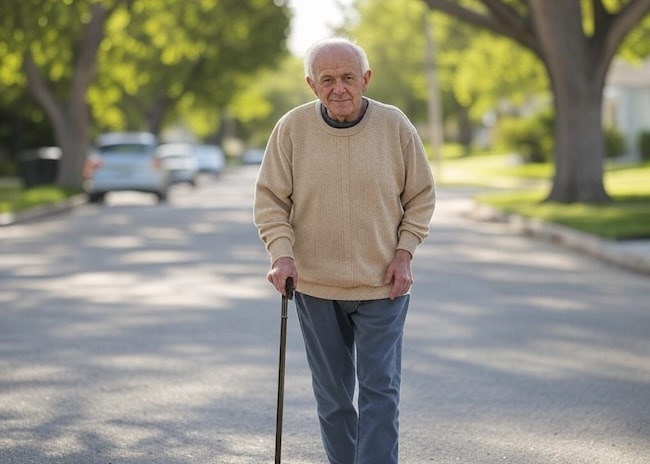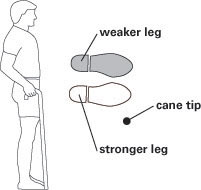Using a cane properly can make a big difference in stability, safety, and confidence for older adults or those with mobility challenges. However, if the cane isn’t the right height, held correctly, or moved in the right way, it may not provide the support needed, and could even increase the risk of falls.

In this guide, we’ll share expert tips on how to use a cane effectively, ensuring maximum safety and support for everyday movement.
Using a Cane Doesn’t Always Come Naturally
Knowing how to use a cane correctly isn’t as apparent as it seems.
Many seniors use canes to improve balance, get support, and reduce their fall risk.
But misusing one can increase the risk of falling.
To supplement instructions from your older adult's doctor, nurse, or licensed physical therapist, we found an excellent video from a physical therapist with step-by-step demonstrations on how to use a cane correctly.
Using the correct technique keeps your older adult safe and helps them get the most benefit from their cane.
The video also includes helpful advice about choosing the right cane for your older adult’s needs, signs that indicate a cane is needed, and why a cane helps prevent falls.
Misusing a Cane Can Cause Pain or Falls
If a cane is misused, it can show as a noticeable limp.
It’s important to know that canes are often misused on popular TV shows. They probably do it to make things more dramatic, but it’s misleading and sets a bad example.
As an example, Dr. House, from the popular TV show House, incorrectly holds the cane on his weak right side and leans heavily on it when he walks, obviously limping. You can see an example of his behavior around the 15 second mark in this video clip.
Those types of unnatural motions can cause added pain or injury from poor posture or unsafe movements.
It can also cause falls because the person’s weight isn’t evenly distributed, and the cane or their hand is more likely to slip.
VIDEO: How to Use a Cane Correctly
Dr. Jo, a doctor of physical therapy, created a brief 7 minute video that shows precisely how to walk with a properly fitted cane.
Her energy and enthusiasm make this video both informative and fun!
6 top tips from Dr. Jo’s video
- The top of the cane should hit at the top of the hipbone
- When standing straight and holding the handle, there should be a slight bend in the elbow.
- Always hold the cane in the hand opposite the weaker side
- The cane moves forward together with the weaker leg.
- Walking with a cane should look a lot like walking normally.
- There are two walking patterns: step through vs. step to.
As Dr. Jo says at the end of the video, if your older adult isn’t walking normally, seems weak, or is off-balance, those are signs that they may need to start using a cane.
Because if they don’t use any support and they fall, they’re going to end up needing much more than just a cane.
But having a cane isn’t enough! It’s just as essential to make sure the cane is the right height and being used correctly!
How to Use a Cane Correctly – A Guide
Here are a few more images that illustrate Dr. Jo’s recommendations.
Notice that the cane is held on the strong side of the body and that it moves together with the weaker leg.

Position the cane tip next to the stronger side

When walking, the cane moves together with the weaker leg

When walking, the cane moves together with the weaker leg
Recommended for you:
- Sit to Stand Exercise: The Best Way to Improve Senior Mobility
- How To Use a Walker Safely and Comfortably for Greater Independence
- 10 Medications That Cause Falls in Seniors: Use with Caution
About the Author

Connie Chow
Connie was a hands-on caregiver for her grandmother for 20 years. (Grandma made it to 101 years old!) She knows how challenging, overwhelming, and all-consuming caring for an older adult can be. She also knows how important support is — especially in the form of practical solutions, valuable resources, and self-care tips.




